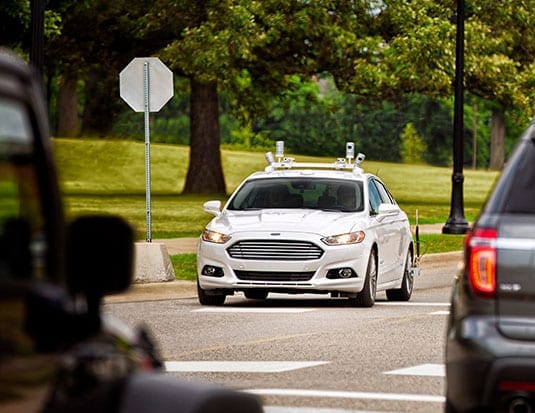The road to a fully autonomous driving experience is long and bumpy.
There’s little doubt that autonomous vehicles will one day rule the roads. The question is when, and what will that mean on a practical day-to-day level for consumers, and for businesses?
Speaking at ARI’s “Best in Fleet” event last year in Ft. Lauderdale, Florida, Inga Maurer, Partner, and Joe Moser, Associate Principal with McKinsey and Company shed some light on the matter.
Benefits of autonomous vehicles
Maurer and Moser painted a clear picture of how autonomous vehicles will benefit businesses. For starters, it will allow those individuals who would normally not drive a vehicle (due to a disability, inability or unwillingness to drive) to get around with relative ease. If the vehicle is doing all their driving for them, they can sit back, relax and enjoy the trip.
With computers doing all the driving, Maurer and Moser predict a host of other benefits, including a 50 to 90 percent reduction in accidents and subsequent fatalities, along with reduced insurance costs.
Driver productivity will also increase dramatically. Since drivers will no longer need to pay attention to the road and to vehicles around them, they’ll be free to get more work done on the go–make phone calls, prepare for their next meeting, fill out reports, etc. The sky’s the limit.
Fleets can expect to see significant reductions in fuel costs. With computers controlling the rate of acceleration, braking, and overall speed, fuel consumption will be optimized by taking out the human factor. This will likely also reduce maintenance needs, with less wear on parts like brakes and suspension components.
Challenges
Maurer and Moser caution that the potential savings outlined above will likely be offset by higher costs, at least initially. Before we reach economies of scale, autonomous vehicles, and the equipment needed to operate them safely, will likely come at a premium.
Moreover, even though a fleet may be fully equipped with autonomous vehicles, those autonomous vehicles will still have to contend with the challenges of sharing the road with traditional vehicles driven by humans. Until every single vehicle on the road is autonomous and in sync will all other vehicles via the Internet of Things, we’ll still have to deal with human error.
Acceptance
Then there’s the challenge of acceptance. Although we love technologies like ABS (antilock brakes), Maurer and Moser explained that most drivers are still not comfortable with the idea of a vehicle thinking for itself and taking control of everything from acceleration, to steering, to changing lanes, to avoiding other vehicles and pedestrians.
Maurer and Moser also explained that the technology isn’t there yet. “It’s one thing to engineer a vehicle that can function in perfect weather with no one else on the road, but when conditions are more challenging, it’s not as easy for that vehicle to function the way it’s supposed to.”
In other words, autonomous vehicles will be more practical in parts of the world where it never snows and where the roads are in perfect condition. Getting the vehicle to navigate streets after a snowfall or through a construction zone, for example, is a challenge, at least for now.
The bottom line, explained Maurer and Moser, is that the road to a fully autonomous driving experience is long and bumpy. “There’s not going to be a change to autonomous vehicles in a single shot. We think it will come in slowly and gradually, over time.” PH



